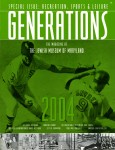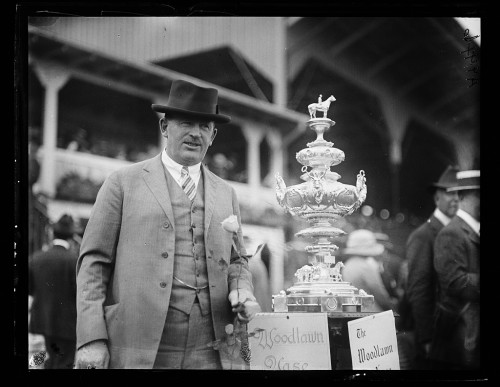Equine Passion Part IV

 Article by Robin Z. Waldman. Originally published in Generations – 2004: Recreation, Sports & Leisure. This particular issue of Generations proved wildly popular and is no longer available for purchase.
Article by Robin Z. Waldman. Originally published in Generations – 2004: Recreation, Sports & Leisure. This particular issue of Generations proved wildly popular and is no longer available for purchase.
Sidebar One: The Preakness at Pimlico
Missed the beginning? Start here.
The Derby is a race of aristocratic sleekness,
For horses of birth
To prove their worth
To run in the Preakness.
– Ogden Nash
The Preakness Stakes, the second of the fabled Triple Crown races for three-year-old thoroughbreds, determines if any winning Kentucky Derby horse, always run two weeks previous, will have an opportunity to win the Crown.
The story of the Preakness begins in 1868, when Maryland Governor Oden Bowie was among the guests at a dinner party hosted by Milton Sanford, after the races in Saratoga, New York. One of the guests proposed that a stakes race be held in 1870, in honor of that evening, to be known as the Dinner Party Stakes. Governor Bowie suggested a purse of $15,000, requested that the race be held in Maryland, and promised to build a new racetrack to host the new event.
With Governor Bowie’s help, the Maryland Jockey Club purchased land known as Pimlico, the name given the area by English settlers in colonial times. Pimlico Race Course was built, and on October 25, 1870, the first Dinner Party Stakes was run as its opening event. Milton Sanford’s horse, named Preakness, won the event. The Dinner Party Stakes became known as the Dixie Handicap. Today it is called the Early Times Dixie and is the eighth oldest stakes race in America.
In 1873 Pimlico introduced its first spring-season race, which Governor Bowie named Preakness in honor of the first Dinner Party Stakes winner. The Victorian clubhouse and the violet-painted stands were both decorated with the Maryland Jockey Club blue and white pennants. A crowd estimated at 12,000 came to see the first Preakness. The race was run successfully at Pimlico for the next 17 years, but following some financial difficulties the 1890 Preakness moved to Morris Park in New York, and later to Gravesend in Brooklyn. The Preakness did not return to Baltimore until 1909. Since then the Preakness has been run every year at Pimlico.

The winner of the Preakness is presented with the Woodlawn Vase, a 34-inch solid silver trophy created by Tiffany & Co. in 1860 and acquired by the Maryland Jockey Club in 1917. Today it is considered by far the most valuable award in American sports. Traditionally the property of the winner for one year, it is considered too valuable for personal safekeeping, and actually lives year-round in a locked safe. It is brought out only for the Winner’s Circle presentations, and a half-size replica is given to the winner to keep.
